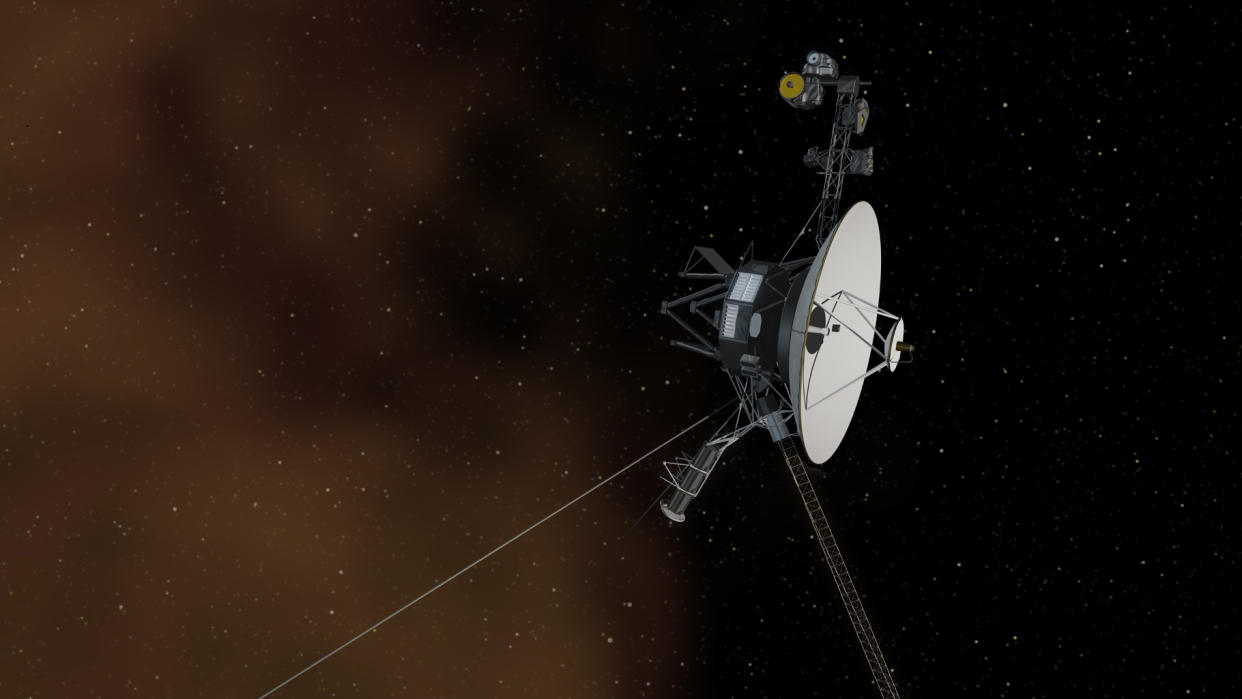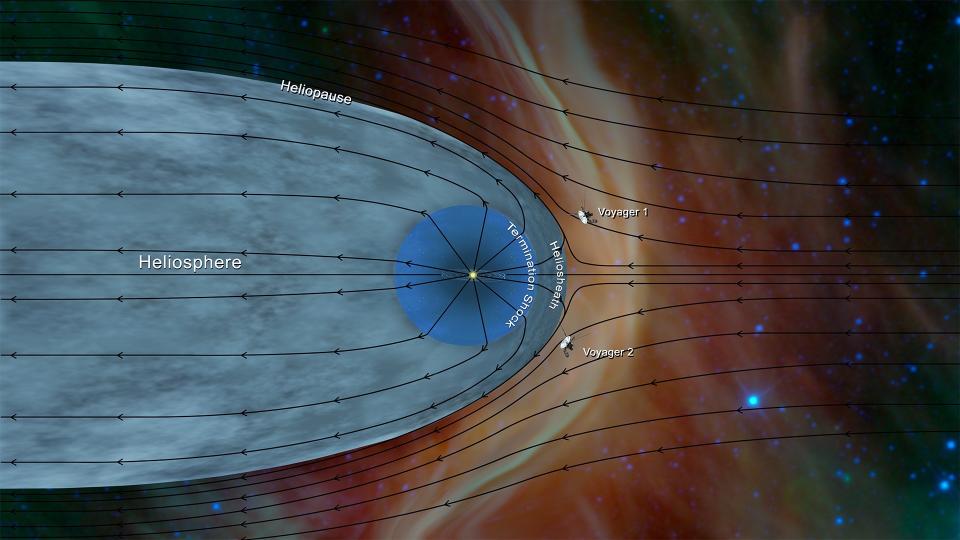NASA hears Voyager 2 'heartbeat' after losing touch with interstellar probe

Voyager 2 is still broadcasting a "heartbeat" from deep space after a communications breakdown.
NASA's long-running Voyager 2 mission, which launched from Earth in 1977, automatically sent a "carrier signal" picked up by the agency's Deep Space Network, agency officials stated Monday (Aug. 1).
"A bit like hearing the spacecraft's 'heartbeat,' it confirms the spacecraft is still broadcasting, which engineers expected," officials with NASA's Jet Propulsion Laboratory (JPL) stated on Twitter. Canberra, Australia's DSN Twitter account confirmed the news as well.
JPL will next send a command to Voyager 2 asking the spacecraft to point itself to Earth. "If that does not work, we'll have to wait until October, when the spacecraft's onboard software automatically tells it to reset its direction," the statement added.
Related: NASA Voyager 2 spacecraft extends its interstellar science mission for 3 more years
The spacecraft, which is about 12.4 billion miles (19.9 billion kilometers) from Earth, lost contact with our planet after a set of commands accidentally moved Voyager 2's antenna two degrees away from Earth.
The mistake severed the link to the ground antennas of the DSN, stopping Voyager 2 from sending back data in interstellar space. Engineers also have, so far, not been able to send commands to the spacecraft. But Voyager 2's programming already has backup enabled, as the spacecraft automatically resets its orientation a few times a year in case of troubles like this.

Voyager 2 flew to space from Launch Complex 41 at Cape Canaveral, Florida, on August 20, 1977. After swinging by the four gas giant planets of the solar system between the 1970s and 1990s, it entered interstellar space on Dec. 10, 2018.
Its twin craft Voyager 1 is also operational, flying far away at about 15 billion miles (24 billion km) from Earth. It was the first object to move beyond the gravitational influence of our star, the sun, in 2012.
Related stories:
— After 45 years, the 5-billion-year legacy of the Voyager 2 interstellar probe is just beginning
— Voyager 2 bounces back from glitch in interstellar space
— Voyager turns 45: What the iconic mission taught us and what's next
The missions are slowly losing power from their nuclear radioisotope generators, but engineers have made several alterations to preserve their systems where possible. The heaters have been shut off, for example, and in April 2023 engineers disabled Voyager 2's surge protector (or voltage regulator).
These steps remove a bit of backup for the spacecraft while allowing their power supplies to last longer. The 2023 step alone has postponed one of the instrument shutdowns for Voyager 2 by three years, extending space data collection until at least 2026, officials said at the time.

